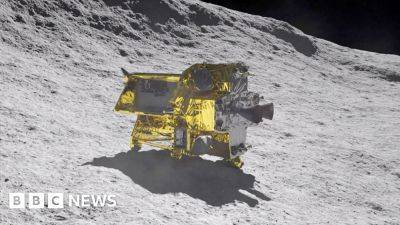Japan Explains How It Made an Upside-Down Moon Landing
Japan became the fifth nation to land on the moon on Saturday, but its spacecraft ended up in an awkward position, with its engine nozzle pointed up toward space.
By design, the Japanese spacecraft, known as Smart Lander for Investigating Moon, or SLIM, was supposed to land on its side, a strategy to avoid tipping over on the sloped terrain of the landing site.
But about 150 feet above the ground, one of SLIM’s two main engines appears to have failed, officials at JAXA, the Japanese space agency, said on Thursday.
With the onboard computer trying to compensate for the sudden loss of half of the thrust, the spacecraft was still able to hit the ground at a modest vertical velocity of about 3 miles per hour. But SLIM’s horizontal speed and orientation at landing were outside what it was designed to handle.
As a result, the spacecraft rolled onto its head. It escaped the fate of some other recent robotic missions, which smashed into pieces on the moon, and its systems worked, communicating with Earth. But the solar panels ended up facing west, away from the lunar morning sun, and were unable to generate electricity. With the battery mostly drained, mission controllers on Earth sent a command to shut down the spacecraft less than three hours after landing.
Despite the stumble, the mission accomplished its primary goal: a soft landing in rugged terrain on the moon, within 100 meters of a target landing site, much more precise than the uncertainty of miles that most landers aim for.







